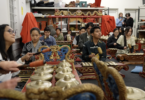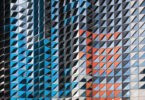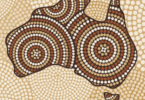New research has raised concern about the growing ethnic segregation at Australian schools.
The school ethnicity study by a researcher at the University of Technology Sydney reveals students with a non-English background make up 52 per cent of all enrolments in Sydney’s public high school while they only account for 22 per cent in private schools.
UTS’s Dr Christina Ho said: “Schools are becoming more segregated in terms of both class and ethnicity.”
“More and more students are going to schools that do not represent the range of people in their neighbourhood, but rather a select group,” Dr Ho said in an article this week in The Sydney Morning Herald.
The research also finds that many Australian parents think that a ‘good school’ for their children is one where ethnic students are in the minority, which explains why more and more Anglo-Australians have abandoned public schools where the enrolment demographic is more diverse.
The segregation trend was very pronounced in Sydney’s wealthy elite suburbs, home to some of Australia’s most expensive private schools.
Dr Ho identified 11 private high schools in the area where the proportion of students from language backgrounds other than English was at or below 20 per cent.
While some of Sydney’s most prestigious private schools have become Anglo-Australian ghettos as the education of high school students across the city is increasingly segregated by ethnic groups, the same trend can be observed in Melbourne with Asian students dominating the majority of enrolments at some government-funded schools.
“I feel like 60 – 70 per cent of the students at the school where I work are from a Chinese background,” said Greig Douglas, a teacher at Glen Waverley Secondary College. “As more Chinese and other Asian parents buy properties near the school zones and send their kids to good public schools like Glen Waverley [Secondary College], Anglo parents are afraid their kids won’t be able to make friends if they attend a school where the majority are of Asian descent.”
Melbourne’s eastern suburbs of Balwyn and Glen Waverley are the most well-known prestige school zones in the Chinese community, which explains why Chinese home buyers would pay a heavily marked-up premium just for the convenience of having prestigious schools nearby.
Shelly Ge is a mum of three, originally from mainland China. She said the main reason she sends her kids to schools with a larger concentration of Asian-Australian students is to cultivate “discipline and hard work.”
“I still think the Asian way of educating kids is the best, teaching the value of hard work and self-discipline. On the other hand, Aussie kids always seem too slack,” Ge said.
Dr Ho said if the current trend continues, Australia risks creating highly unbalanced school communities rather than communities that reflect the full diversity of Australian society.







